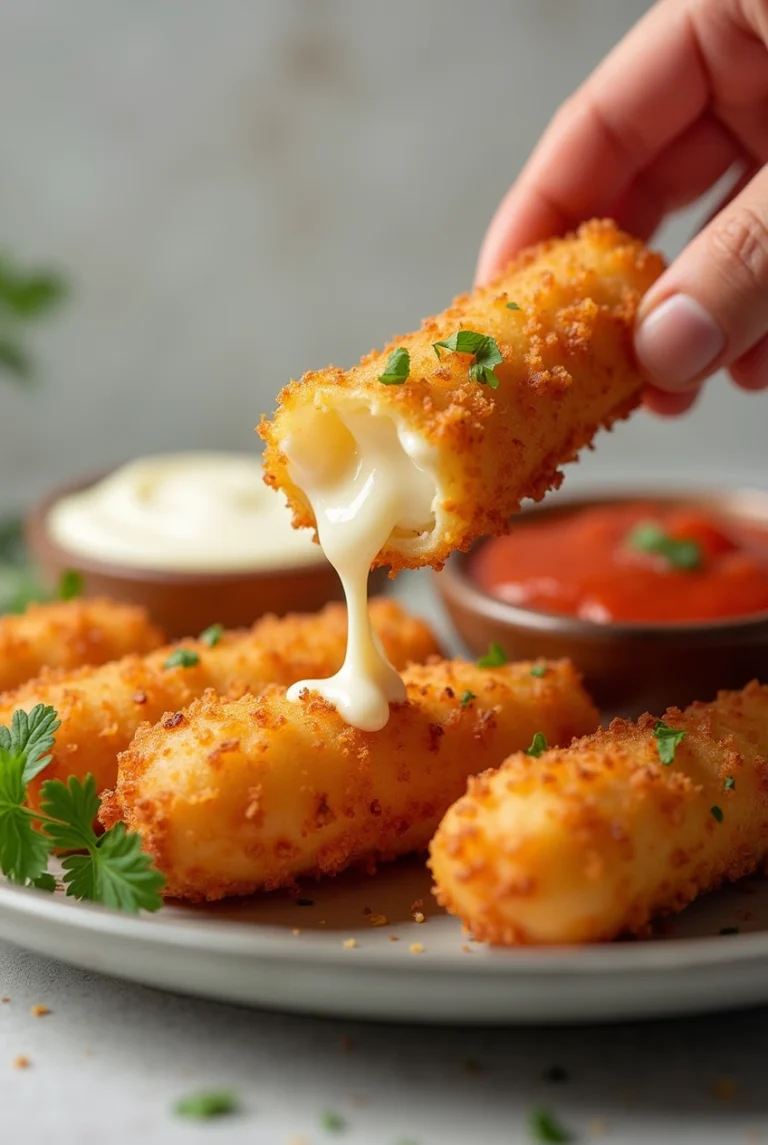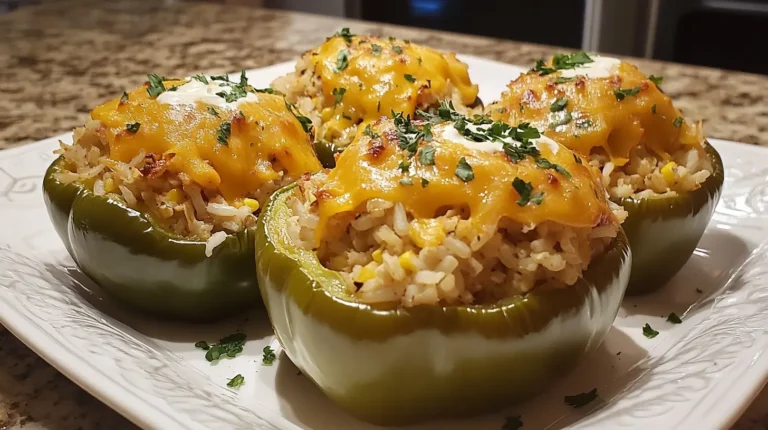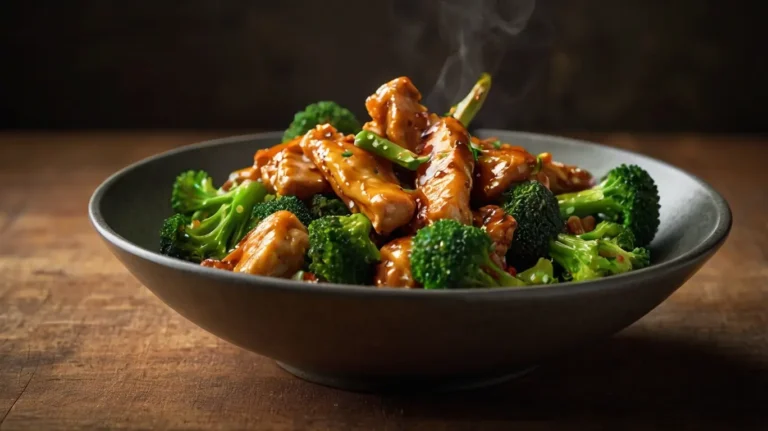Polenta Recipe: 5 Creative Ways to Serve It
Polenta is a versatile and beloved dish that has been a staple in Italian cuisine for centuries. Made from cornmeal, this creamy or firm dish can be served as a side, a main course, or even a dessert. Whether you’re a seasoned cook or a beginner, this guide will walk you through everything you need to know about making the perfect polenta recipe. From its rich history to step-by-step cooking instructions, we’ve got you covered.
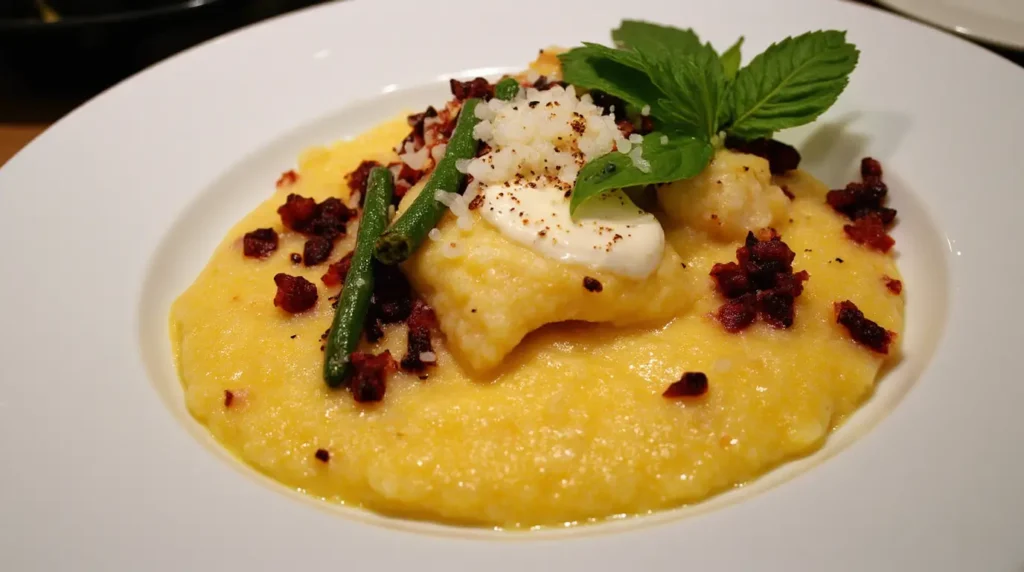
Table of Contents
What is Polenta?
Polenta is a traditional Italian dish made by boiling cornmeal into a porridge-like consistency. It can be served creamy or allowed to set and then sliced for frying or grilling. Historically, polenta was a peasant food, but today, it’s celebrated worldwide for its versatility and comforting texture.
Ingredients for the Perfect Polenta Recipe
To make a basic polenta recipe, you’ll need:
- 1 cup of cornmeal (coarse or medium grind for traditional polenta)
- 4 cups of water or broth (for added flavor)
- 1 teaspoon of salt
- Optional: Butter, cheese, or herbs for added richness
How to Make Polenta Recipe: Step-by-Step Guide
Choose the Right Cornmeal
- Use coarse or medium-ground cornmeal for traditional polenta. Fine cornmeal can result in a gummy texture.
Use the Proper Water-to-Polenta Ratio
- A general rule is 4 cups of liquid to 1 cup of cornmeal. Adjust for creamier or firmer results.
Cooking Techniques
- Stovetop Method: Bring water to a boil, slowly whisk in cornmeal, and simmer for 30-40 minutes, stirring frequently.
- Oven Method: Combine ingredients in a baking dish and bake at 350°F (175°C) for 40-50 minutes.
- Microwave Method: Use a microwave-safe bowl and cook in short intervals, stirring in between.
Stirring is Key
- Stir frequently to prevent lumps and ensure even cooking.
Achieve the Desired Consistency
- For creamy polenta, cook until smooth and pourable. For firmer polenta, cook longer and let it set.
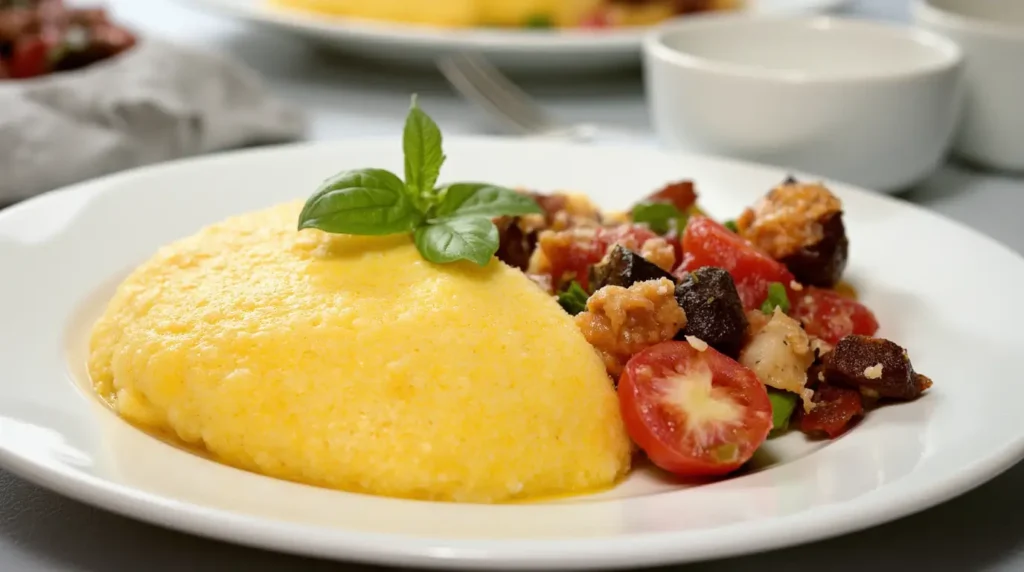
Types of Polenta Recipe
- Traditional Polenta: Made from coarse-ground cornmeal, it requires longer cooking times.
- Instant Polenta: Pre-cooked and dried, it’s a quicker alternative but may lack depth of flavor.
Nutritional Benefits
Polenta is naturally gluten-free and a good source of complex carbohydrates. It’s also low in fat and can be enriched with cheese, herbs, or vegetables for added flavor and nutrients. For a deeper dive into its health benefits, check out this nutritional breakdown of polenta.
Essential Tools for Making Polenta Recipe
To create the perfect polenta recipe, you don’t need a lot of fancy equipment. However, having the right tools on hand can make the process smoother and more enjoyable. Here are the essential tools you’ll need:
1. Heavy-bottomed pot or Saucepan
- A heavy-bottomed pot ensures even heat distribution, preventing the polenta from burning or sticking to the bottom.
- Opt for a medium to large-sized pot to accommodate the expanding cornmeal as it cooks.
2. Whisk
- A sturdy whisk is crucial for incorporating the cornmeal into the liquid without creating lumps.
- Use it continuously during the initial stages of cooking to achieve a smooth consistency.
3. Wooden Spoon
- Once the polenta starts thickening, switch to a wooden spoon for stirring.
- Wooden spoons are gentle on the pot and help scrape the sides and bottom effectively.
4. Measuring Cups and Spoons
- Accurate measurements are key to achieving the right texture. Use measuring cups for the cornmeal and liquid, and measuring spoons for salt and other seasonings.
5. Cutting Board and Knife (Optional)
- If you plan to make polenta fries or polenta cakes, you’ll need a cutting board and a sharp knife to slice the polenta into your desired shapes.
6. Baking Dish (Optional)
- For baked polenta or if you’re letting it set to fry later, a baking dish is useful. Choose a dish that’s the right size for the quantity you’re making.
Why These Tools Matter
Using the right tools ensures that your polenta turns out smooth, creamy, and free of lumps. A heavy-bottomed pot prevents scorching, while a whisk and wooden spoon make stirring effortless. Accurate measurements guarantee the perfect consistency and optional tools like a cutting board and baking dish open up creative possibilities for serving.
With these essential tools, you’re well-equipped to master the art of making polenta!
Polenta Variations to Try
- Cheesy Polenta: Stir in grated Parmesan or cheddar for a rich, savory flavor.
- Herbed Polenta: Add fresh herbs like rosemary, thyme, or basil.
- Vegan Polenta: Use plant-based butter and skip the cheese.
- Polenta Fries: Let polenta set, slice into sticks, and bake or fry until crispy.
Serving Suggestions for Polenta Recipe
Polenta is incredibly versatile and pairs well with a variety of dishes:
- With Sauces: Top with marinara, mushroom ragù, or a creamy Alfredo sauce.
- As a Side Dish: Serve alongside roasted vegetables, grilled meats, or seafood.
- Creative Ideas: Make polenta cakes for breakfast or polenta fries as a snack.
Storing and Reheating Polenta Recipe
- Storing: Place leftover polenta in an airtight container and refrigerate for up to 5 days.
- Reheating: Add a splash of water or milk and reheat on the stovetop or microwave, stirring frequently.
- Freezing: Slice and freeze for up to 3 months. Thaw and reheat as needed.
Common Mistakes to Avoid
- Overcooking or Undercooking: Aim for a smooth, creamy texture without letting it dry out.
- Using the Wrong Cornmeal: Fine cornmeal can make polenta gummy.
- Not Stirring Enough: Frequent stirring prevents lumps and ensures even cooking.
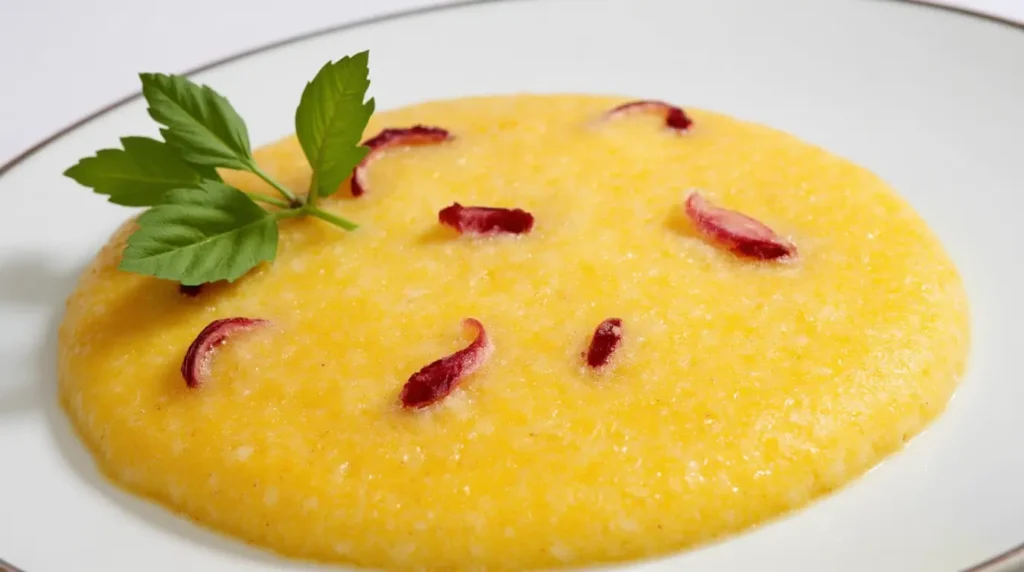
FAQs About Polenta
- What is the best cornmeal for polenta?
Coarse or medium-ground cornmeal works best for traditional polenta. - Can I make polenta without dairy?
Yes, use water or plant-based milk and skip the cheese for a vegan version. - How long does it take to cook polenta?
Traditional polenta takes 30-40 minutes, while instant polenta cooks in about 5 minutes. - Is polenta gluten-free?
Yes, polenta is naturally gluten-free as it’s made from cornmeal.
Conclusion
Polenta is a simple yet versatile dish that can be adapted to suit any taste or dietary preference. Whether you prefer it creamy, firm, or fried, this polenta recipe is sure to become a favorite in your kitchen. Don’t be afraid to experiment with different flavors and serving styles.
Looking for more healthy alternatives? Check out Quinoa salad for another nutritious meal idea.



